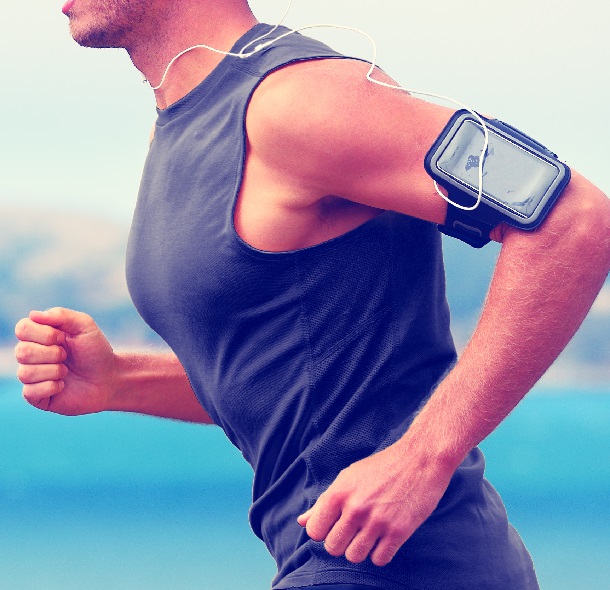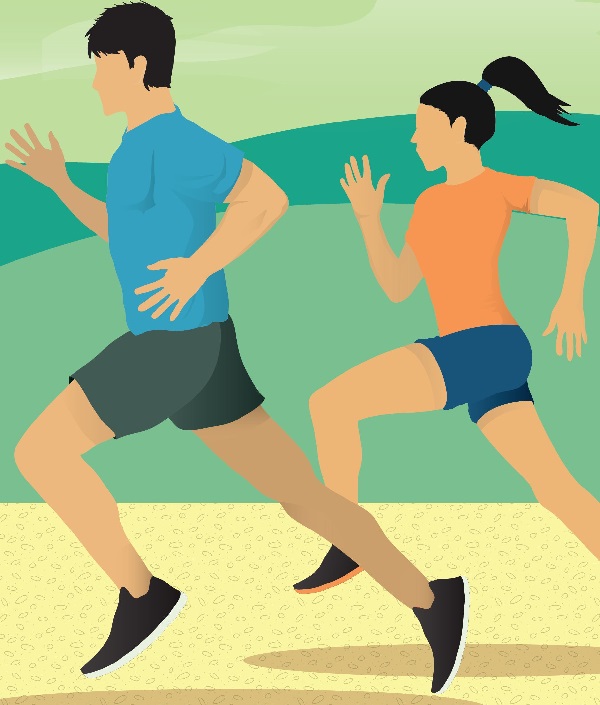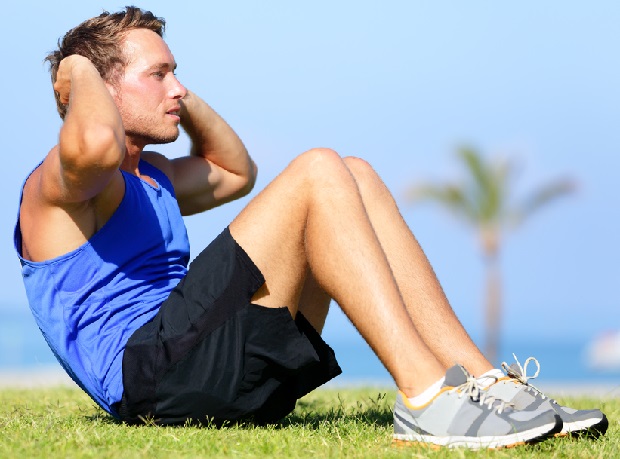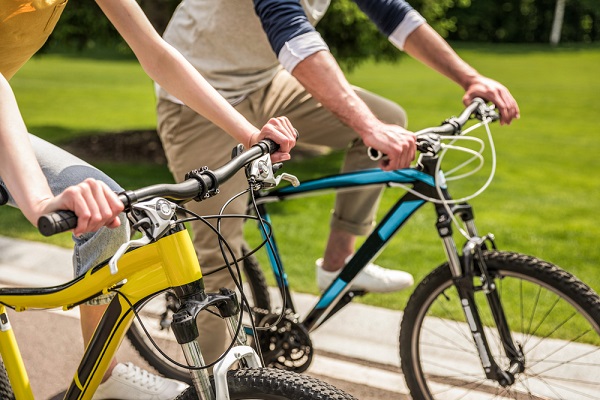A Little Into…
Did we lose you already? Many people HATE cardio.
It’s exhausting and mostly leaves you without breath.
And, nearly 100% of gym trainees who want to gain muscle mass, swear that cardio is going to kill their gains.
Now, the first is due to the fact that quite simply, the person is not adapted to cardio activity, hence, gets exhausted quickly.
The second..
Well, it can happen, if you systematically deprive your body of food and overdo cardio.
However, people saying that are mainly misinformed and have never actually done consistent, well-structured cardio workouts.
Furthermore, they don’t even know that cardio can HELP build muscle, but we will discuss that later on in the article.
For now, let’s start with the basics.
What is cardio?
We highly recommend you to read our article on “Differences between aerobic and anaerobic workouts”, where we dive deep into the explanation between aerobic (cardio) workouts.
However, we’ll put it into a couple of sentences here so that it can make sense for you.
The body has 2 main types of energy demand fulfillment – Anaerobic and Aerobic.
The anaerobic type generally sustains high-intensity physical activities, short in duration.
The aerobic type, often referred to as oxidative, sustains low-intensity physical activities, long in duration.
These activities are called “Cardio”.
So, essentially, cardio is any activity that lasts more than 2 minutes and is low in intensity.
Generally, both types of energy systems use the same fuel to recover Adenosine triphosphate, which is the molecular energy currency of living organisms.
That fuel is glucose.
The stored form of glucose is called glycogen, and it is the end product of carbohydrates’ metabolism.
Glycogen is stored primarily in the musculature, since it is way bigger than the second storage: The liver.
Cardio activities however, not only use the muscle and liver glycogen, but also fatty acids.
The last resort for the aerobic system, in case there is no glycogen/fat available, are the proteins.
So, knowing this, we can conclude the following
- Cardio is any low-intensity activity, long in duration;
- Cardio uses muscle glycogen, liver glycogen, fat and lastly, proteins if the first 2 are unavailable;
- Cardio can kill your muscle gains if you don’t give your body enough carbohydrates and if you consistently overdo it.
What are the benefits of cardio?
For the most part, nearly every trainee hates cardio and excludes it completely from their training regimen.
However, aerobic exercise is an essential part, which you want to include, in case you’re looking to be the healthiest and fittest version of yourself possible.
Whether it’s just running, or swimming and biking, you can make use of cardio’s health benefits that will significantly improve your quality of life.
Besides improved cardiovascular health and performance, regular aerobic activity can help you build stronger bones, promote longevity and even boost your mood and account for a better sleep.
Even if you don’t do resistance training (which in our opinion, you should), just doing cardio a couple of times a week will significantly boost your health.
Heart and skeletal conditions are pretty much the worst things that can happen to you.
And while they are a total nightmare, especially for adults, they can be prevented with regular exercising.
As we said, aerobic activities, done just a couple of times weekly, will lower your heart rate, blood pressure and improve your conditioning in the long term, day by day.
Problems such as high heart rate and blood pressure, put you in a significant risk to cardiovascular disease.
These problems are not only caused by the modern day’s sedentary lifestyle, but also the foods we consume.
That is to say that not only do you have to manipulate your training and physical activity regimen, but also improve your nutrition habits.
If your doctor prescribes medications for your heart issues, and you keep on smoking, eating bad and sitting in front of the TV… Well, the medications won’t help you.
So, regular cardio activity will:
- Improve cardio-vascular function
- Improve cardio performance and endurance
- Improve immune system
- Lower the risk of cardiovascular disease
If done properly, cardio workouts can also help you burn that excess fat and keep you in an elevated mood.
In the long term, regular aerobic activity will also improve the capillarization of the musculature.
This, in turn, will improve the blood flow to the musculature and result in better recovery. Hence, more muscle growth.
If you implement cardio properly, not only will you improve your health, but also your looks.
Pretty cool, isn’t it?
“Sedentary lifestyle is an important cardiovascular risk factor. CVD has no geographic, socioeconomic, or gender boundaries. It is the leading cause of death in developing and developed countries. Risk factors for CVD are consistent throughout the world, and this includes lack of physical activity”. US National library of medicine“(1)
Read: Low Impact Cardio Workout for Beginners
Can cardio help build muscle?
As we mentioned above, cardio improves cardio-vascular function, lung function, blood flow and lowers the risk of heart disease.
Also, it helps you supply your musculature with more blood and nutrients and hence recover it faster.
And, faster recovery, ladies and gents, translates to faster muscle growth.
So, that is one way cardio activity can benefit muscle gains.
But what if we told you that cardio activities can actually, DIRECTLY build muscle?
That may sound like science fiction, but it is all about manipulating your cardio exercises, to trigger different energy systems in the body and hence, produce that end result- Muscle growth.
Let us explain how that works.
If you go back to our article where we discuss the differences between anaerobic and aerobic activities, you will see that anaerobic activities are short-burst, intense bouts of physical activity.
And while a cardio workout will generally consist of sustained 20-30 minute, low-intensity activity, we can include intervals of high-intensity activity to stimulate the activation of the anaerobic systems.
The anaerobic systems of course, deplete muscle ATP, CP and Glycogen, trigger fast-twitch muscle fibers and of course, result in muscle hypertrophy (growth).
Picture it this way: Take a marathoner who mainly trains for cardio endurance.
He usually runs at least a couple dozen miles per week and does little to none resistance training.
For the most part, these types of training result in a skinny musculature, which may to some extent be lean, but in no way is it powerful.
On the flipside, we can take a rugby player. He is strong, powerful, muscular and heavy.
His workouts usually consist of resistance training (weights), aerobic training and last but not least, high intensity running, or in other words, Sprints.
The workouts of the second individual are characterized with their high intensity and short duration and that, results in muscle growth.
That is to say that every trainee who is looking to mainly improve their musculature, should include low-intensity aerobic activity to reap its health benefits, but also high-intensity sprints at least one time per week.
Best cardio exercises
Below, we will give you our TOP picks for cardio activities.
- Running
This is the best-known type of cardio activity.
Running, or as others call it, jogging, is the perfect stimulus for improvements of heart function, as well as the perfect mood booster.
Jogging is pretty much engraved into our DNA, as it is the most natural human activity, according to the natural human patterns.
It is pretty much the oldest type of physical activity, which is also why the body has a tendency to be able to run for hours.
The aerobic energy system is the MOST SUSTAINABLE system in the human body.
However, nowadays in 21st century, you will see people drive their car to the gym, to run on a treadmill.
Running has turned into less of a regular activity and often times, people find it challenging.
Now, there is a difference between jogging and running.
Jogging is usually a very low-paced physical activity, that doesn’t severely deplete you of energy.
The demands of actual running workouts, where we sustain a moderate pace are bigger and lead to better, more prominent cardiovascular adaptations.
That is also why, jogging is the most recommended form of physical activity, when it comes to improving heart function.
“But what about my joints?”
Well, many people think that running will lead to a premature wear and tear of their joints and ligaments.
That of course, will lead to a decreased quality of life and the inability to do many activities pain-free.
It is true that during running, the knees take a big load, as opposed to walking. However, that does not necessarily mean injury.
As a matter of fact, most people suffering knee/ankle and hip problems, have never consistently done aerobic exercise and their conditions are rather caused by aging changes and excessive weight.
The human body is a strong organism, that has the tendency to adapt to any type of physical activity.
Each time we do a routine physical activity, the body does it more and more efficiently and running is not an exception, but rather the easiest thing the body will adapt to.
As we mentioned, running boosts bone strength!
This means that while running (correctly), not only do we reap heart benefits, but we also PREVENT knee wear and tear, and we also improve their mobility.
If someone tells you they injured their knees or other joints because of running, odds are they were not running correctly.
Another tip to avoid injuries is to choose the surface: Avoid asphalt at all costs.
Either go in the nature or on a running track.
Read: Lean Muscle Workout & Diet for Men
- Swimming

The general opinion of many trainers, doctors and physical therapists, is that swimming is one of the best cardio activities for health and body improvement.
Slightly cold water will generally improve your immune system and adapt your body to the fluctuating external (atmospheric) conditions.
Swimming is the most sparing cardio activity for the organism.
In certain cases, running and biking for example can cause oxygen insufficiency.
However, swimming on the flipside, significantly increases the lungs’ capacity and generally teaches the body how to breathe correctly.
Furthermore, swimming stimulates the blood flow and you will basically end your low blood pressure issues if you start regularly including swimming in your routine.
Not to mention, water by itself is the most common substance on earth.
It is not just water, but rather something that carries energetic frequencies and has a calming effect on the mind.
Try it for yourself…
During a period of depression or low mood, establish contact with water.
Even if it is not swimming, but just being in water, you will feel a significant difference and boost in your mood.
Additionally, swimming engages basically every muscle in the human body, meaning that regular swimming will not only help you burn fat, due to the high energy expenditure, but will also tone your body.
You might have heard it from physical therapists, but we cannot miss mentioning this: Swimming is the perfect activity to do, to recover from skeletal-muscular trauma.
This activity allows each joint to move through its full range of motion.
- Biking
Sometimes, cardio is impossible for people that have skeletal issues, such as arthritis, joint pains and injuries.
Biking is one of the physical activities that spare our joints and ligaments, if done correctly.
If you have some excess weight, or lower body joint pains, then biking is your go-to cardio exercise.
The general logic behind this is that biking, as opposed to running, puts a lesser amount of tension on the working musculature, making it perfect for beginners or less-adapted trainees.
If you’ve done it, you have felt it. Biking can be done for hours, without excessive exhaustion.
That is because, while pedaling, we have roughly 60% of our bodyweight on the bike itself.
Making it a HUGE relief for the skeletal-muscle system.
That means you won’t put excessive tension on the joints and ligaments!
Correct riding posture is of prime importance, as incorrect execution can lead to an opposite effect – Injuries.
Your back must be completely straight and slightly bent over.
Also, you have to setup your seat so that your feet barely touch the ground when fully extended, otherwise, you risk knee injury.
If you are still starting off on your biking journey, make sure to not overdo it.
30 to 40 minutes of low intensity pedaling, a couple of times per day is just enough.
To further boost adaptations, gradually increase the workouts’ durations.
Once you get used to a prolonged, low to moderate pace, start increasing the pace to up the intensity!
- Sprinting
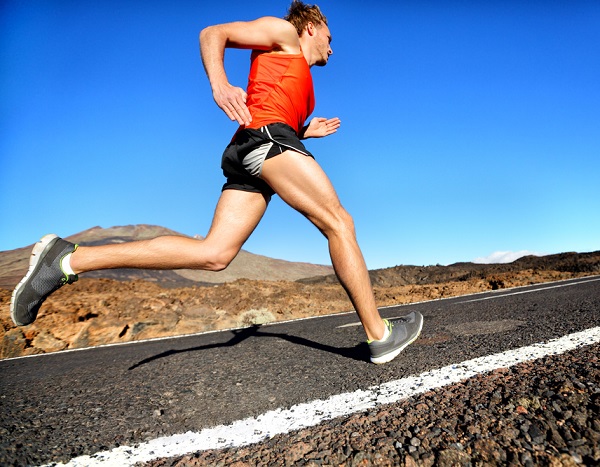
Last but not least: Intense running bouts!
This is our favorite exercise, to stimulate muscle growth and put a great deal of demand on the cardiovascular system as well.
Generally, sprinting has to be done 1 to 2 times a week, but beware, if you also do weight training, do NOT do it the day before or after leg day.
That way, you will get the most of it.
Sprinting is great because it prioritizes your least-developed lower body muscles and brings them up.
That is to say that if you have lacking calves, due to the intense nature, they will inevitably adapt to the tension and grow.
We recommend good warm-up prior to sprinting.
A good sprinting workout will look like this-
- 5-10 minutes of light jogging,
- 2-3 minutes of stretching and breathing,
- Starting the sprinting bouts- 20-30 meters of gradual acceleration, followed by 50-80 meters of maximum intensity sprinting,
- Back off with 100 meters of light jogging or walking to relax the musculature,
- Repeat.
If done correctly, sprints will tremendously boost your muscular development and metabolism.
As regular running, we recommend you to do your sprints on a running track or somewhere in the nature.
AVOID ASPHALT!
It’s too hard on the joints.
Types of cardio
- HIIT cardio
Alright, enough talking about the benefits of cardio, let’s talk about the types of cardio one can do.
The first one is HIIT Cardio.
As opposed to the usual cardio, which by the way is called “Steady state cardio”, the HIIT includes bouts of intense action.
HIIT stands for “High intensity interval training”.
So, with running for example, that would be Jog-Sprint-Jog-Sprint etc.
Generally, if you’re looking for an efficient, quick way to burn energy (Calories), HIIT is your go-to type of cardio.
But why pick HIIT?
Well, as we already mentioned, aerobic activity can be sustained for longer periods of time.
That is due to the fact that the body switches to the so-called “Aerobic metabolism”, where the oxidative pathways grant energy for physical activity.
However, the aerobic pathways can only sustain low-intensity activity.
Using HIIT, we trigger the anaerobic pathways as well, allowing us to execute intense bouts of physical activity that engage the fast-twitch muscle fibers as well.
That is to say that if we want to reap the benefits of both energy systems (Aerobic and anaerobic), we can utilize HIIT very well.
Doing HIIT cardio will most certainly improve your cardio endurance, cardiovascular function, health, as well as explosiveness, growth hormone and testosterone secretion and therefore, promote hypertrophy.
So, bottom line is that using HIIT will allow you to burn a significant amount of energy, while also creating an anabolic environment of the organism, which is the perfect muscle growth stimulus.
- Fasted cardio

Fasted cardio does not just mean running on an empty stomach, as that is just one of the requirements.
Fasted cardio is also linked to how the body absorbs the nutrients we take in via food and the physiological processes that follow afterwards.
When we consume food, it breaks down to different molecules, which are available for the cells to use.
At the same time, we secrete insulin, which has a main purpose of helping the molecules enter the cells.
This is widely used in post-workout nutrition, with a combination of protein and simple carbohydrates.
Consuming the carbohydrates elevates insulin levels and it therefore opens the cell, helping the protein get inside it easier. This therefore allows for maximum absorption of the consumed protein.
This effect is best achieved with a protein supplement.
While the body digests and absorbs the food, we can say that it is in a fed state, and after the digestive processes are over, the insulin levels fall back down to the lower baseline and the body enters a fasted state.
Thanks to these processes, and thanks to the fact we don’t consume food while sleeping (Unless you’re sleepwalking/sleep-eating), our insulin and glucose/glycogen levels are at their lowest when we wake up.
On the flipside, the growth hormone and glucagon levels are high.
This makes for the perfect fat-burning environment, meaning that if you are looking for consistent, quick fat loss, morning fasted cardio is your best friend.
However, if your main goal is building and sustaining muscle mass, you should resort to other types of cardio, as fasting kills muscle mass.
Even if you don’t, you can still minimize muscle loss and do fasted cardio.
We highly recommend supplementing with BCAAs and increasing protein intake generally, if you want to build muscle but also do fasted morning cardio.
- Low impact cardio
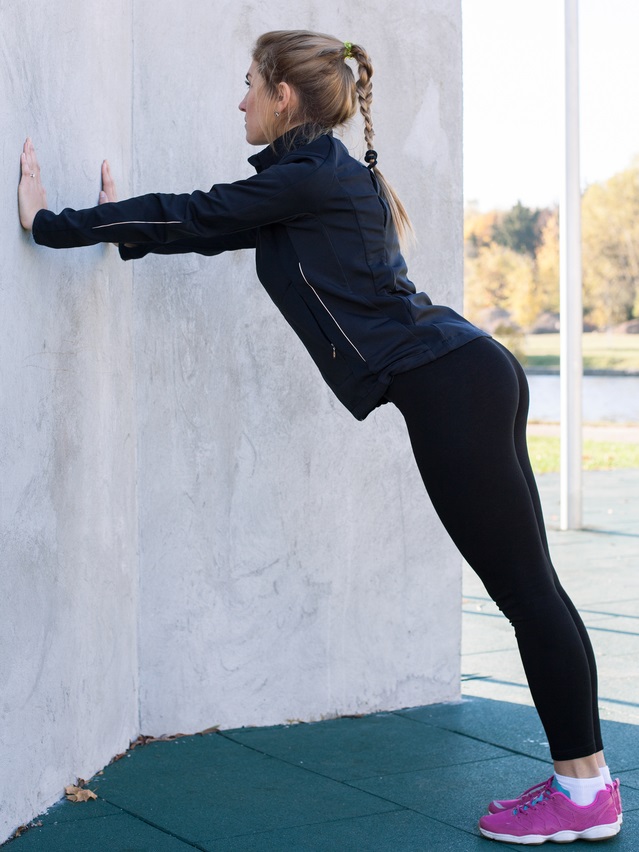
When joint pain occurs, doing regular cardio for prolonged periods is nearly impossible and more stressing than beneficial, making that extra energy expenditure unworthy.
Thankfully, there are many types of low-impact cardio.
This type of cardio spares the joints and ultimately increase your heart rate, maintaining it for a certain period of time.
Our top picks for low-impact cardio are: Walking, swimming and biking.
To read more on the last two, go back up to the best cardio exercises section.
- Insanity pure cardio
Why we put a lion picture for this type of cardio?
Because intense results require lion-hunting-prey intensity.
If you want insane results, you have to train like a mad man.
If you don’t yet know about this fat-melting type of cardio, called “Insanity pure cardio”, we’ll give you a quick rundown of it.
This is a workout that takes less than 50 minutes to complete, from the first to the last exercise.
It is a good time window to make you sweat, raise your heart rate and feel the musculature and the body working as one whole system.
Insanity pure cardio is similar to HIIT, with a tad bit more intensity.
It is essentially max intensity interval training.
What you basically do is go all-out for 2 to 5 minutes and then follow up with short rest periods, just enough to help you slightly recover, before the next maximum intensity bout.
The goal of this workout is to make you work at your maximum capacity and capabilities, for the entire duration of the workout.
This workout activates every energy system of the body and leads to all kinds of adaptations, besides the fact that it helps you burn a tremendous amount of energy and hence, stimulate fat loss.
Bottom line
Cardio has many benefits and can be utilized in different ways.
From heart health benefits, to endurance and muscle building stimulus.
It is all about proper structure and utilization!
Depending on your individual characteristics, preferences, abilities and goals, you can pick your perfect cardio exercise and means of executing it.
Ultimately, you are doing it for the greater purpose of achieving an overall, functional and well-looking body.
REFERENCES:
(1) https://www.ncbi.nlm.nih.gov/pmc/articles/PMC3396114/
(2) https://www.slimtree.com/crazybulk-bulking-stack-reviews/
(3) https://www.slimtree.com/mass-stack-review/
(4) https://www.slimtree.com/crazy-cutting-stack-pack/
(5) https://www.slimtree.com/cutting-stack/
(6) https://www.slimtree.com/crazy-bulk-guide-reviews/
(7) https://www.slimtree.com/anabolics-com/
(8) https://www.slimtree.com/best-mass-gainer-vs-best-weight-gainer-supplements/
(9) https://www.slimtree.com/legal-steroids/
(10) https://www.slimtree.com/female-cutting-stack/
